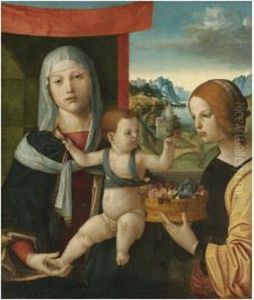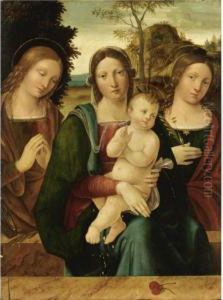Antonio Solario Lo Zingaro Paintings
Antonio Solario, also known as Lo Zingaro (The Gypsy), was an Italian painter of the Quattrocento (15th century), active mainly in Naples, Italy. His nickname 'Lo Zingaro' is believed to be a reference to his supposed Ukrainian origin or his itinerant lifestyle before settling in Italy; however, details of his early life and origin remain obscure.
Solario is thought to have been born around 1382-1383, and his works suggest that he had some contact with the artistic developments in Northern Europe as well as those in the Italian peninsula. While there is no concrete evidence regarding his apprenticeship or early training, stylistic analyses of his paintings indicate that he was familiar with the work of contemporary Netherlandish painters, which was somewhat unusual for an Italian artist of his time.
In Naples, Solario became associated with the court of Alfonso V of Aragon, who ruled as the King of Naples from 1442 until his death in 1458. Under Alfonso's patronage, Solario's style flourished, blending local Neapolitan elements with influences from Northern Europe. His work is characterized by its detailed naturalism and the clarity of its narrative, a combination that was well suited to the tastes of his aristocratic clientele.
One of his most significant works is the fresco cycle in the Church of San Giovanni a Carbonara in Naples, which he began around 1436 and completed over several years. This cycle features scenes from the life of the Virgin Mary and is celebrated for its elegance and its integration of architectural elements with the painted scenes.
Despite the importance of his work in Naples and his influence on other artists, few details of Solario's life are known, and only a small number of his works have been firmly attributed to him. He is believed to have died in 1455 in Naples. His legacy continued through his influence on Neapolitan painting, particularly in the work of his presumed pupil, Colantonio, who played a significant role in the development of early Renaissance painting in Naples.

